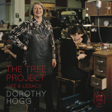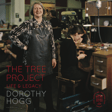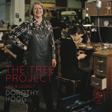
The Tree Project: Nicola Glass & Maeve Gillies
In this episode, we speak to Nicola Glass and Maeve Gillies, both 1996 graduates of Edinburgh College of Art.
Nicola Glass is an Irish-born creative director and designer with over two decades experience in the luxury fashion industry. Nicola's varied career includes working as a handbag designer at Gucci under the creative direction of Tom Ford, 13 years leading accessory design at Michael Kors and, most recently, serving as Creative Director of Kate Spade.
Maeve Gillies BA Hons MA RCA FSA Scot is a multi-award-winning Scottish-American jeweller, designer and brand consultant with 30 years luxury design innovation, manufacturing and global brand-building experience across North America, Asia, Australia and Europe.
During her time as Head of Jewellery & Silversmithing at Edinburgh College of Art, renowned jeweller and educator Dorothy Hogg MBE inspired students in the workshop and beyond. For more information on Dorothy Hogg, the project and participants, visit: www.scottishgoldsmithstrust.org/tree-project.
Hosted by Ebba Goring
Edited & Produced by Eda Obermanns
Cover Image by Shannon Tofts
Music: Precious Memories by Shane Ivers - https://www.silvermansound.com


